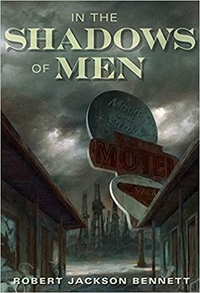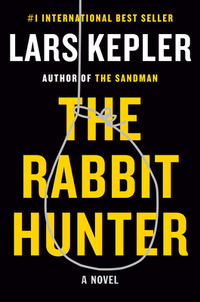Dark Hollows by Steve Frech
 Wednesday, September 2, 2020 at 6:54AM
Wednesday, September 2, 2020 at 6:54AM 
Published in Great Britain in 2019; published by HarperCollins/HQ on September 1, 2020
Dark Hollows straddles the border between thriller and horror. Much of the story occurs around the Halloween season. Elements of horror spring out of the text on occasion, including spooky woods and a graveyard, the appearance of a woman who might be a ghost, and a cockroach infestation. The novel also depends on the underlying fear that something evil might be done to a dog, which for dog lovers is pretty horrific.
Jacob Reese lives in a Vermont town called The Hollows. He owns a coffee shop that he hopes to franchise. He also rents out a cottage on his property as sort of a bed-and-breakfast without the breakfast. Everyone seems to like Jacob well enough and they adore his dog Murphy.
Jacob has a dark secret in his past. He was once a low-level drug courier (not so much a dealer as a go-between, although there’s no legal distinction between the two roles). Jacob was dating a woman named Laura until his unlawful employment got in the way of their relationship. Laura ended up dead and Jacob blamed himself, although he didn’t actually kill her.
The Hollows gives Jacob a place to hide from his past until a woman shows up who seems to be the reincarnation of Laura. Bad things (did I mention cockroaches?) begin to happen after the woman appears. It eventually becomes clear that this version of Laura places even more blame on Jacob than Jacob places on himself for Laura’s fate.
The story follows Jacob as he tries to figure out who this woman is and why she is sabotaging his life. The plot is tense at times, particularly after Murphy disappears, but lacks a “wow factor.” The story is about as credible as most modern thrillers, meaning it’s a bit far-fetched, but it never becomes so preposterous that I lost my will to suspend my disbelief. The narrative travels through its peaks and valleys at a good pace. Steve Frech pushes all the buttons that thriller writers need to push to make a reader invest in the plot, but the story is sufficiently contrived that I never lost awareness of my buttons being pushed.
Jacob is the novel’s only real character; everyone else is supporting cast. Jacob is presented as a conflicted young man, torn between past and present, striving to assuage his guilty conscience by making his current life worthwhile. The last scene requires Jacob to make a choice between accepting responsibility and the consequences of his choices or continuing on his current path. What choice he will make is deliberately ambiguous — this is a novel that allows the reader to write the ending — but Frech seems to suggest that living with a guilty conscience is a worse fate than living with the consequences of bad decisions. Personally, I think Jacob should lawyer up before he does anything, but readers can make their own judgments.
RECOMMENDED



